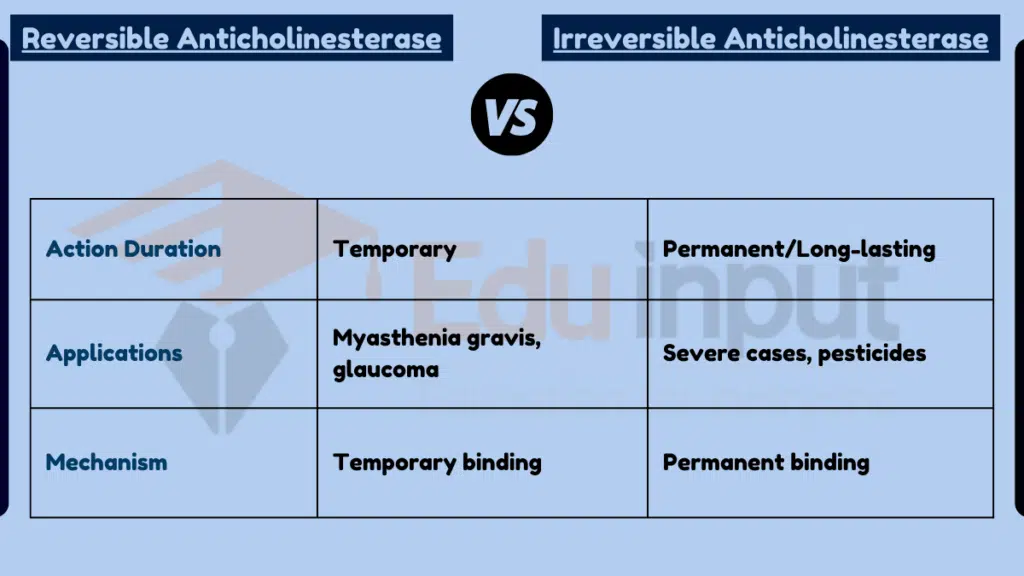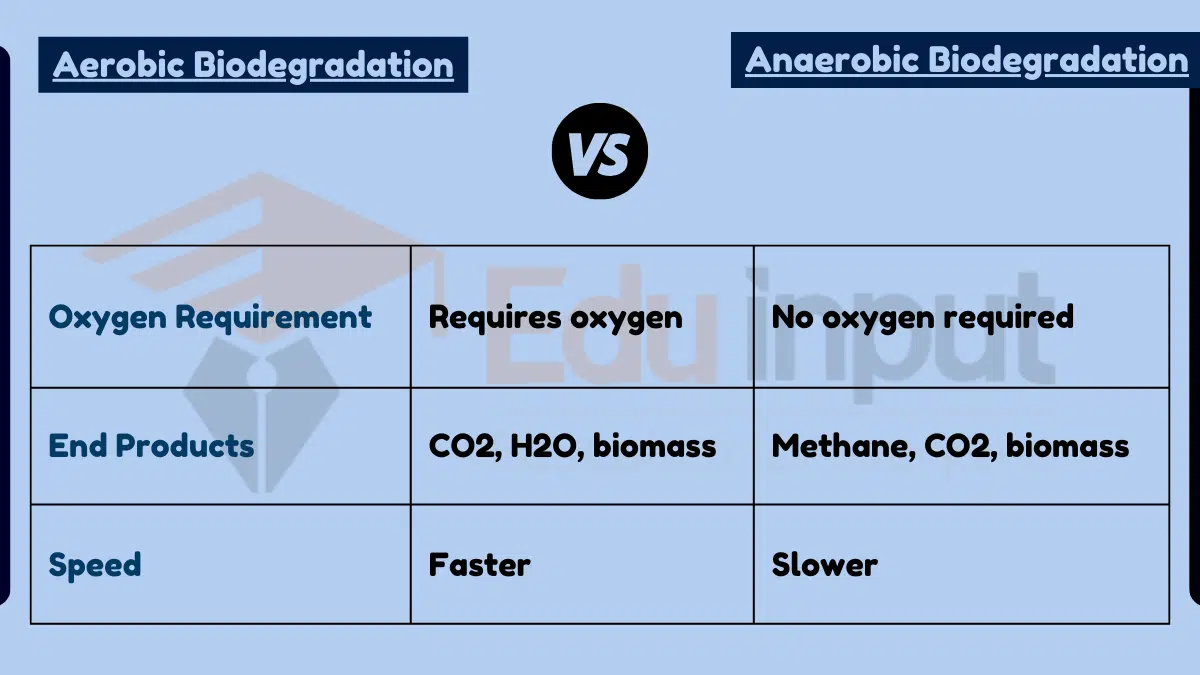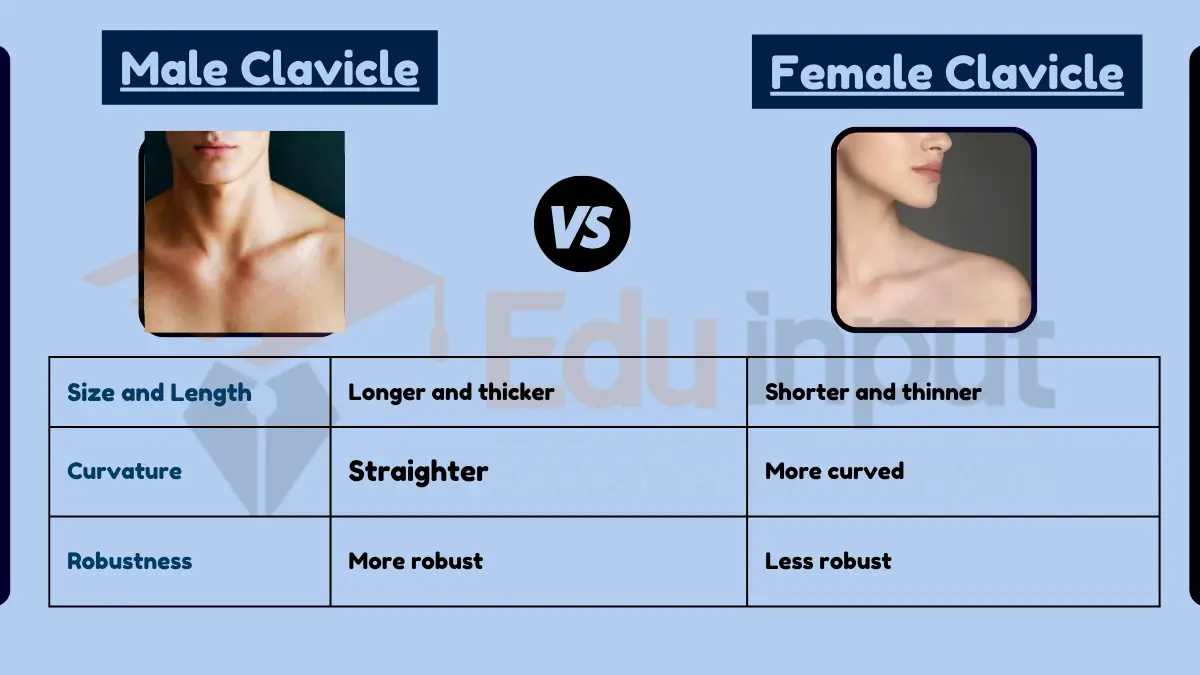Difference Between Reversible and Irreversible Anticholinesterase
Key Difference
Reversible and irreversible anticholinesterases are types of drugs that inhibit the enzyme acetylcholinesterase, but they differ in their duration of action and applications. Reversible anticholinesterases temporarily inhibit acetylcholinesterase, allowing a controlled increase of acetylcholine for medical purposes. Irreversible anticholinesterases, on the other hand, bind permanently to acetylcholinesterase, leading to a long-lasting increase of acetylcholine, and are often used in more severe conditions or, in some cases, as pesticides or nerve agents.

Comparative Analysis
- Duration of Action:
- Reversible Anticholinesterase: Temporary inhibition of the enzyme.
- Irreversible Anticholinesterase: Permanent or long-lasting inhibition.
- Medical Applications:
- Reversible: Used in treating conditions like myasthenia gravis, glaucoma.
- Irreversible: Used in severe cases, some are pesticides or nerve agents.
- Mechanism of Action:
- Reversible: Bind to the enzyme temporarily.
- Irreversible: Form covalent bonds, permanently inactivating the enzyme.
- Recovery Time:
- Reversible: Effects can be reversed in a short period.
- Irreversible: Effects last much longer, may require synthesis of new enzymes.
Table Summary
| Feature | Reversible Anticholinesterase | Irreversible Anticholinesterase |
|---|---|---|
| Action Duration | Temporary | Permanent/Long-lasting |
| Applications | Myasthenia gravis, glaucoma | Severe cases, pesticides |
| Mechanism | Temporary binding | Permanent binding |
| Recovery | Short period | Requires new enzyme synthesis |
Reversible and irreversible anticholinesterases play crucial roles in both medical and non-medical contexts, distinguished by their duration of action and their mechanisms, which dictate their uses and implications for health.







Leave a Reply